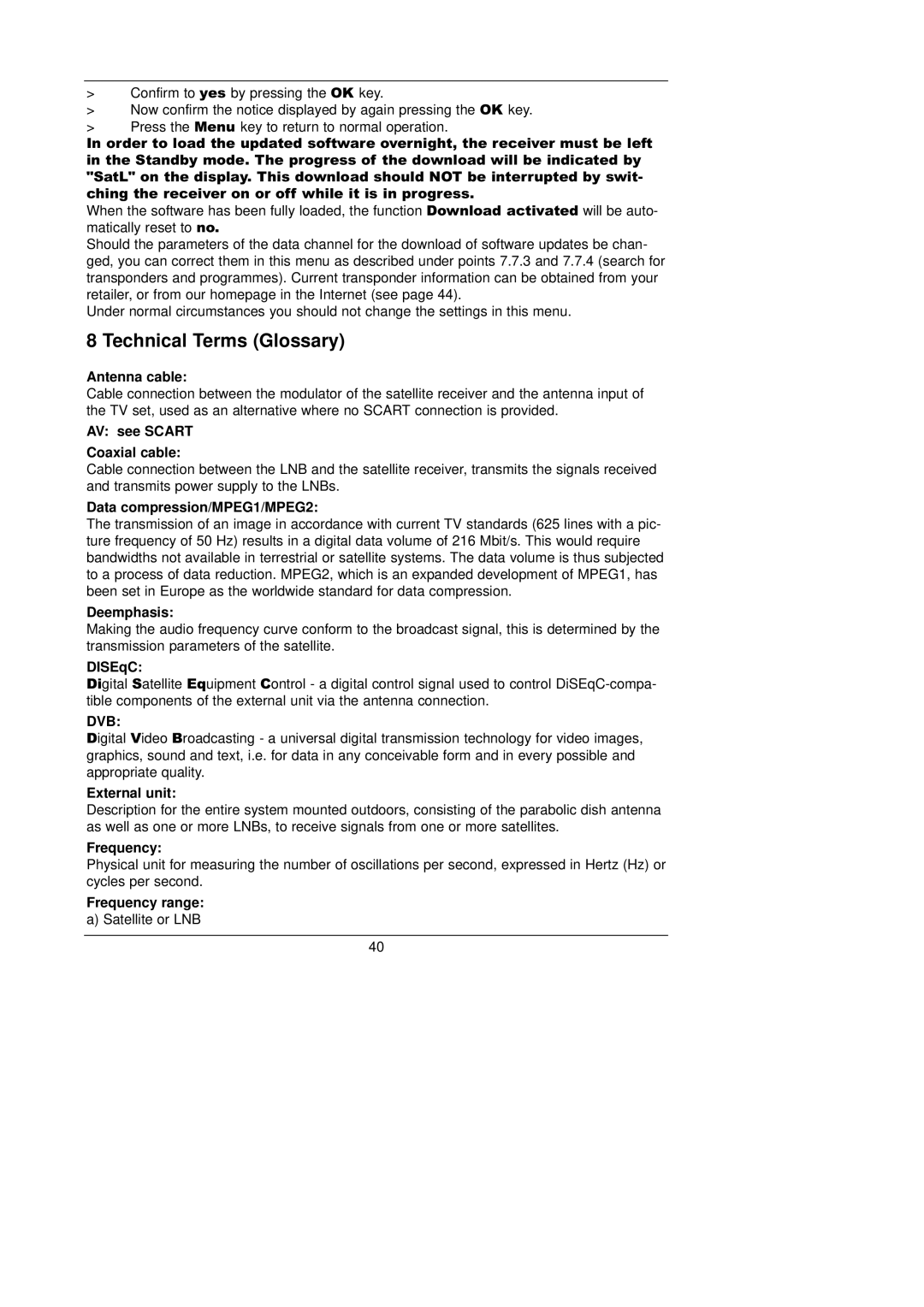
>Confirm to yes by pressing the OK key.
>Now confirm the notice displayed by again pressing the OK key.
>Press the Menu key to return to normal operation.
In order to load the updated software overnight, the receiver must be left in the Standby mode. The progress of the download will be indicated by "SatL" on the display. This download should NOT be interrupted by swit- ching the receiver on or off while it is in progress.
When the software has been fully loaded, the function Download activated will be auto- matically reset to no.
Should the parameters of the data channel for the download of software updates be chan- ged, you can correct them in this menu as described under points 7.7.3 and 7.7.4 (search for transponders and programmes). Current transponder information can be obtained from your retailer, or from our homepage in the Internet (see page 44).
Under normal circumstances you should not change the settings in this menu.
8 Technical Terms (Glossary)
Antenna cable:
Cable connection between the modulator of the satellite receiver and the antenna input of the TV set, used as an alternative where no SCART connection is provided.
AV: see SCART
Coaxial cable:
Cable connection between the LNB and the satellite receiver, transmits the signals received and transmits power supply to the LNBs.
Data compression/MPEG1/MPEG2:
The transmission of an image in accordance with current TV standards (625 lines with a pic- ture frequency of 50 Hz) results in a digital data volume of 216 Mbit/s. This would require bandwidths not available in terrestrial or satellite systems. The data volume is thus subjected to a process of data reduction. MPEG2, which is an expanded development of MPEG1, has been set in Europe as the worldwide standard for data compression.
Deemphasis:
Making the audio frequency curve conform to the broadcast signal, this is determined by the transmission parameters of the satellite.
DISEqC:
Digital Satellite Equipment Control - a digital control signal used to control
DVB:
Digital Video Broadcasting - a universal digital transmission technology for video images, graphics, sound and text, i.e. for data in any conceivable form and in every possible and appropriate quality.
External unit:
Description for the entire system mounted outdoors, consisting of the parabolic dish antenna as well as one or more LNBs, to receive signals from one or more satellites.
Frequency:
Physical unit for measuring the number of oscillations per second, expressed in Hertz (Hz) or cycles per second.
Frequency range:
a) Satellite or LNB
40
